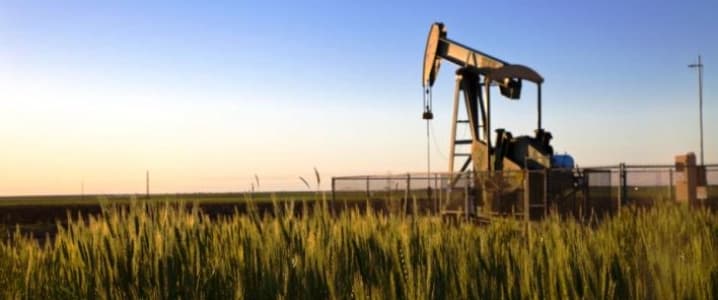While the oil price crash was forcing shale drillers to idle rigs, lay off workers, or go bust, some big producers continued to pump oil from conventional fields in the Permian. They were using a technology to capture the carbon dioxide produced in oil extraction and inject in back into the ground to extract more oil and extend the life of mature fields.
This is the story of Hobbs, New Mexico—population 37,000+, situated next to the border with Texas in the Permian, which is now the main growth driver of the U.S. shale resurgence.
Around Hobbs, Occidental Petroleum continued to produce low-cost oil amid the oil price slump, using enhanced oil recovery (EOR) techniques which extract more oil from the ground, reuse CO2, and last but not least—comes with a tax credit.
The EOR techniques, which many big companies have been employing, are estimated to be able to recover between 30 and 60 percent— or even more in some cases—of a reservoir’s original oil in place, compared to 10 percent in primary recovery and between 2 and 40 percent in secondary recovery. Apart from squeezing more oil from a well, the EOR could become even more attractive for oil companies as the U.S. Congress is expected to debate later this year extending the tax credits, and possibly lifting the credit values per metric ton of CO2 capture.
In the midst of the downturn, wells around Hobbs kept pumping oil.
“When everyone else in the oil industry was going down, Oxy kept working,” Joshua Grassham, vice president of Lea County State Bank and a Hobbs Chamber of Commerce board member, told Reuters.
Almost three-quarters of Occidental’s Permian Basin EOR business unit oil production is from fields that employ CO2 flooding, an EOR technique in which CO2 is injected into oil reservoirs, causing the trapped oil to flow more easily and efficiently.
In 2015, when the price of oil was already on a downward curve, Occidental completed the first stage of its CO2 Enhanced Oil Recovery expansion project at its South Hobbs Unit. The additional CO2 has resulted in a 50 percent increase in oil production, which is expected to grow over the next few years, according to the company.
Related: The Dark Side Of The Oil Tech Boom
“We had a very large, stable carbon dioxide EOR business in our portfolio during the downturn. That helped,” Jody Elliott, president of Occidental's American operations, told Reuters.
The two U.S. supermajors, Exxon and Chevron, are also using CO2-based EOR, including in conventional oil projects in the Permian.
Although various studies discuss the potential use of EOR in shale, the technique has been employed only in conventional fields so far.
According to Reuters, later this year the U.S. Congress is expected to discuss extending the tax credits, which were first introduced in 2008.
The proposed legislation would increase the credit value to US$35 per metric ton of CO2 for EOR storage from US$10 now, according to a January 2017 report prepared by the National Energy Technology Laboratory and the Great Plains Institute for the U.S. Department of Energy.
Earlier this year, the Great Plains Institute released a statement, calling upon President Donald Trump and Congress “to make CO2 pipelines a priority component of a broader national infrastructure agenda and recommending that the federal government support the development of CO2 pipeline networks that will securely transport large volumes of carbon dioxide to American oil fields for use in enhanced oil recovery (CO2-EOR).”
Proponents and users of the CO2-EOR say that this technique is a win-win development in the fossil fuel industry: reducing emissions on the one hand, and boosting oil production on the other.
By Tsvetana Paraskova for Oilprice.com
More Top Reads From Oilprice.com:
- Is Saudi Arabia’s Vision 2030 Too Ambitious?
- Libya’s Largest Oil Field Shuttered By Protests After Oil Worker Dies
- Nigeria’s Oil Theft Epidemic



















I'm all for squeezing the last available drop of oil from every well, but this is not something that taxpayers should subsidize. Rather than subsidies increasing, perhaps they should be phasing out.